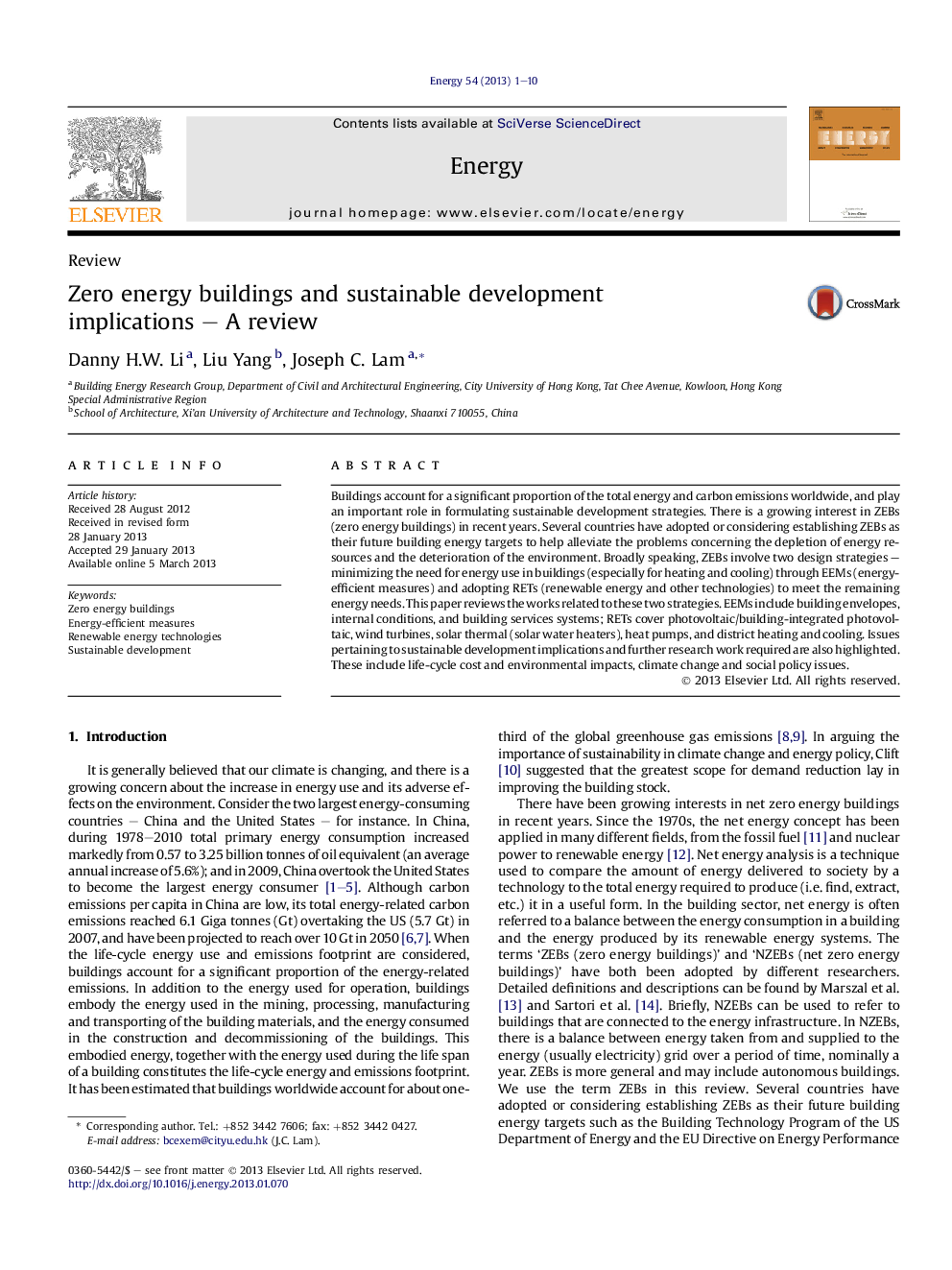| Article ID | Journal | Published Year | Pages | File Type |
|---|---|---|---|---|
| 1732781 | Energy | 2013 | 10 Pages |
Buildings account for a significant proportion of the total energy and carbon emissions worldwide, and play an important role in formulating sustainable development strategies. There is a growing interest in ZEBs (zero energy buildings) in recent years. Several countries have adopted or considering establishing ZEBs as their future building energy targets to help alleviate the problems concerning the depletion of energy resources and the deterioration of the environment. Broadly speaking, ZEBs involve two design strategies – minimizing the need for energy use in buildings (especially for heating and cooling) through EEMs (energy-efficient measures) and adopting RETs (renewable energy and other technologies) to meet the remaining energy needs. This paper reviews the works related to these two strategies. EEMs include building envelopes, internal conditions, and building services systems; RETs cover photovoltaic/building-integrated photovoltaic, wind turbines, solar thermal (solar water heaters), heat pumps, and district heating and cooling. Issues pertaining to sustainable development implications and further research work required are also highlighted. These include life-cycle cost and environmental impacts, climate change and social policy issues.
► We conduct a review of works related to ZEBs (zero energy buildings). ► Energy-efficient measures – building envelopes, internal condition, services systems. ► Renewable and other technologies – PV (photovoltaic), wind, solar thermal, district heating/cooling. ► Further research works to enhance ZEBs and sustainable development are discussed. ► These are life-cycle environmental impact, climate changes and social policy issues.
